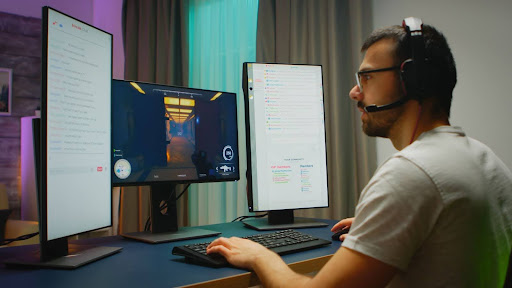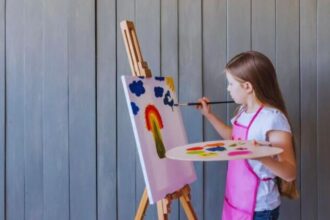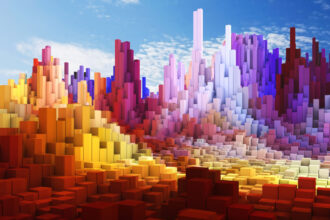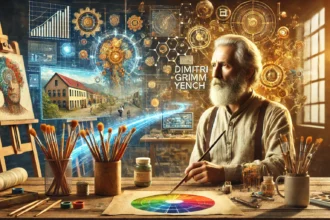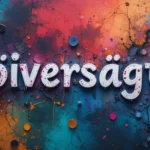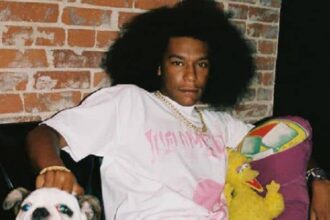Every unforgettable game begins with a sight — a world imagined, shaped, and textured into existence. Before lines of code and game mechanics enthrall the players, it is the visuals with which the mood is cast: an atmosphere of a spooky forest, the glint of an armor considered and reflected upon, and an expression that says the entire story of a character without uttering a single word. 3D art services convert these ephemeral concepts into practical visuals that are believable, optimized, and strongly emotion-evoking.
3D art finds itself somewhere in the nexus between technology and creativity. It goes beyond just modeling or rendering objects now. It is the fabrication of entire universes, dynamic, consistent, and ready to engage with players. A professional 3D art services provider realizes the imagination into real-world assets that characterize how a game feels.
The art behind the pixels
In-game 3D content creation goes far beyond sculpting shapes. Every asset, be it a complex environment or a simple prop, undergoes the conceptual design, modeling, texturing, rigging, and lighting processes. Each process requires a different set of skills and tools, and they all must conform to one another to reach a mutual aesthetic and technical performance goal.
To detail means to balance. Excessive visual complexity results in a loss of performance; insufficient visual elements are unbearable in this world. Therefore, 3d game art services blend artistic judgment with technical precision to ensure that visuals are pleasing to the eye and render smoothly across the targeted platforms.
Studios like N-iX Games thus house entire pipelines around this balance. Keeping artists and technical specialists in close collaboration from the very first concept to final art implementation keeps both the integrity of artistry and pdf to word converter optimizations intact so that preferred performance stays intact through PC, console, and mobile.
The big picture of 3D art services
While “3D art” may appear as a single discipline, this realm is indeed a huge ecosystem of specialties. Depending on considerations of the producers, their offerings may be arranged with respect to phases of production or with respect to the artistic intention.
- Character art is the design and sculpture of characters, telling stories through shape, facial expression, and outfit. This usually ranges from high-poly modeling, retopology, and PBR texturing to afford a high degree of lifelike detail and performance efficiency.
- Environment art designs incarnate worlds, cities, landscapes, and interiors that provide a stage upon which gameplay is enacted. Environmental art subtly guides the player’s journey through lights, composition, and color.
- Props and Weapons — These fine details enrich believability. A sword can reflect light in one way, but its surface wears down in another.
- Animation and Rigging — Making just beautiful things is not enough. Animators give a model life, an experience of movement.
- Lighting and Rendering — Lighting represents feelings in images. A subtle change can shift the mood of an entire level.
- Optimization and Integration — Art is only good so far as it can perform. Optimization ensures assets are technically constrained by the engine and the platform from which they will be called.
Together, they sculpt an uninterrupted parade from the dawn of an idea to the polished product, ready to be shipped into an engine.
Collaboration as a creative process
From the best collaborations, 3D artists transcend beyond being just outside providers for any given production. They work as co-creators. They comprehend the game’s tone: its rhythm, symbolism, and world logic, and they transform that visually.
For instance, at N-iX Game Studio, art fabrication commences after a deep-dive analysis of the client’s perceptive crevices. Before any modeling can start, artists and art directors develop visual benchmarks and detailed documentation. This sort of early collaboration limits guesswork down the road and becomes vital to aiding large-scale production consistency.
This process workflow, being iterative and not linear, will see concept sketches morphing into sculpted prototypes, whose textures will be adjusted and fine-tuned depending on the actual feedback from the game experience, and then the lighting is set fine to be beneficial for both the readability and the emotional value of the game. At every stage, cross-team communication takes place (art, design, and engineering), ensuring that aesthetic priorities remain tightly wound with technical priorities.
Technologies empowering 3D art
A set of technologies lies behind every visually arresting game. Today, the 3D pipeline is a conglomerate of a fast-growing arsenal of tools:
- Procedural modeling (à la Houdini style) for rapid yet consistent world building.
- Physics-based rendering for believable materials and lighting.
- Real-time ray tracing for cinematic reflection, shadow, and GI.
- AI-assisted tools for texture synthesis, retopology, upscaling, and cleanup of animations.
- Node-based materials and shader graphs for looks that are shared across assets.
- Photogrammetry & scanning for capturing high-fidelity, production-ready surfaces.
- Version control & CI (e.g., Git/Perforce + automation checks) to keep the pipeline stable.
Common production challenges & resolutions
Common pain points:
- Style drift between concept and final assets.
- Performance bottlenecks from high polycounts, high draw calls, or complex shaders.
- Fragmented communication across art, design, and engineering.
- Killer deadlines that let go of polish and QA.
- Gaps between integration when engine specs, or tools, are different from one team to another.
- IP/security specter around the sharing of assets and remote access.
How these are minimized in a professional team setting:
- Upfront alignment: style guides, visual benchmarks, acceptance criteria.
- Milestone gating: greybox → hi-poly → LODs → final, and each with defined review points.
- Tech art ownership: profiling, LODs, impostors, lightmap discipline, and shader optimization.
- Clear cadence: weekly reviews, issue tracker, and a single source of truth.
- Automated checks: naming conventions, exporters, build validators.
- Security by design: NDAs, access segmentation, encryption, and audit trails.
At its best, this turns production into a collaborative loop together with the forward movement of creativity and technology.
Looking ahead
With games pushing every limit — visual, technical, and emotional — 3D art will continue to become further embedded. Players are no longer consuming entertainment; they want experiences with a bit of life and personal attachment.
That’s what companies like N-iX Games stridently pursue. With invaluable industry experience in 3D production, co-development, and real-time visualization, you can find 3D art services for end-to-end development at such a studio, where creativity meets delivery. Every project is treated as a collaborative venture from the first sketch to the super-fine rendering, focusing on establishing a brand that world players can believe in.
3D art is no longer merely a visual skin. It has become the emotional core of contemporary interactive media. And so long as this industry is powered by imagination and expert 3D art services, it will remain to link bridging concepts to experience—that is, bridging developer rendition to player perception.


